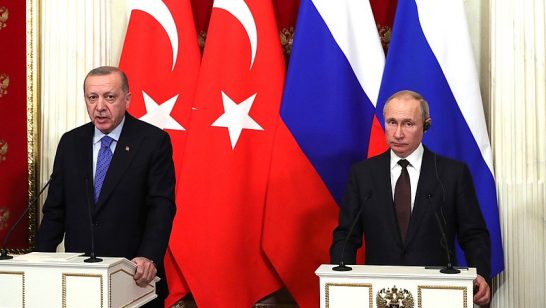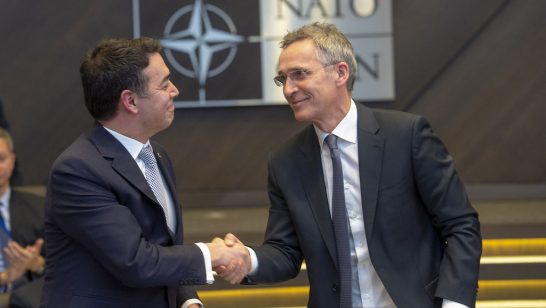
The saying goes that, in the view of past experiences, every crisis NATO faced strengthened the Alliance. Let us only hope that the same will be true this time again. Because, this time the challenges NATO is facing coincide with a challenge to the Western international order as such, to its central position in the transforming international system.
NATO has won the Cold War: the Soviet Union, its arch enemy, disintegrated and permitted the former Warsaw Pact countries to live freely and embrace democracy and market economy. At a time when some critics, in the West, saw the same events as an opportunity to get their “freedom” from the “American domination”, we, in the East wanted to become members of NATO, as the sole guarantee of our newly acquired freedom against Russia’s potential comeback.
Fortunately, NATO responded positively to our plea and enlarged towards us, thus stabilizing and securing the disintegrating eastern part of Europe, allowing for the reunification of the divided continent. That injected new blood into the Alliance, providing it in the 1990s with a reinforced “raison d’etre”. Later on, given the violent break up of former Yugoslavia and the requirements of fighting international terrorism, NATO added a new mission to its original role of collective defense of its members, namely crisis management.
Today, NATO, the most successful alliance in history, is winding up its most complex military involvement in Afghanistan, having to find new ways to preserve the operational capacity acquired there, at a time of public wariness and diminishing defense spending, against the background of a prolonged financial and economic crisis and public.
Russia’s illegal annexation of Crimea and the subsequent destabilization of Eastern Ukraine is a game changer. The distant, or even non-existent perspective of a large conventional attack in Europe has suddenly become reality. For Russia, a new, highly questionably international “legality” based on discredited concepts like the right to defend nationals living in foreign territories, takes precedence over the respect of national sovereignty and territorial integrity [1]. NATO is being challenged not with aggression, but with subversion, being forced to contemplate again a flexible response. And a new strategic landscape in the Black Sea and the adjacent region is being re-molded under our very eyes.
Naturally, these sudden negative developments have raised the need for the Alliance to quickly reconsider the defense of its Eastern flank, reassuring its members in the area: the Baltic states, Poland, Romania and Bulgaria. Russia’s aggressive actions have not only proved that we, in the East, were right to look for NATO admission immediately after the disintegration of the Soviet Union, but also made us want material guarantees that Art V of the Washington Treaty will be applied in case of need. Simple membership to the Alliance will not do anymore. We need concrete defense plans, backed by material means, and a military presence guaranteeing a short tripwire to their implementation. This way, it can be said that NATO has to go back to square one, reinforcing its initial mission, namely that of collective defense of its members (without giving away the positive experience and capabilities for crisis management acquired in the meantime).
We recognize that this is not an easy task. More than two decades since the end of the Cold War and the disappearance of a common enemy have led to a mosaic like threat perception among the allies, to a growing interdependence with Russia, particularly in the energy field, which is being now exploited by Moscow to undermine allied unity, to a diminished willingness to invest in defense, following the peace dividend brought by the successful termination of the Cold War.
Apart from dealing with these realities, going back to square one requires the Alliance to undertake a number of actions with respect to a more operative decision-making, maintaining interoperability after Afghanistan through exercises, planning and positioning of forces, rebuilding public support and making a better and more efficient use of its network of partnerships, among which the one with the EU is a high priority [2].
There were expectations related to the EU Council on defense in December 2013, as there are expectations related to the future NATO summit in Wales. But this time, the level of urgency increased significantly as there is an open conflict on Europe’s soil, not on the back yard, but rather on the front yard of NATO and the EU.
—–
[1] See William W. Burke-White “Crimea and the International Legal Order”, Survival, August-September 2014, pp 65-80
[2] See The Chatham House Research Paper, Xenia Wickett and Kathleen J. McInnis US Project “NATO: Charting the Way Forward”
The opinions articulated above represent the views of the author(s), and do not necessarily reflect the position of the European Leadership Network or any of its members. The ELN’s aim is to encourage debates that will help develop Europe’s capacity to address the pressing foreign, defence, and security challenges of our time.



